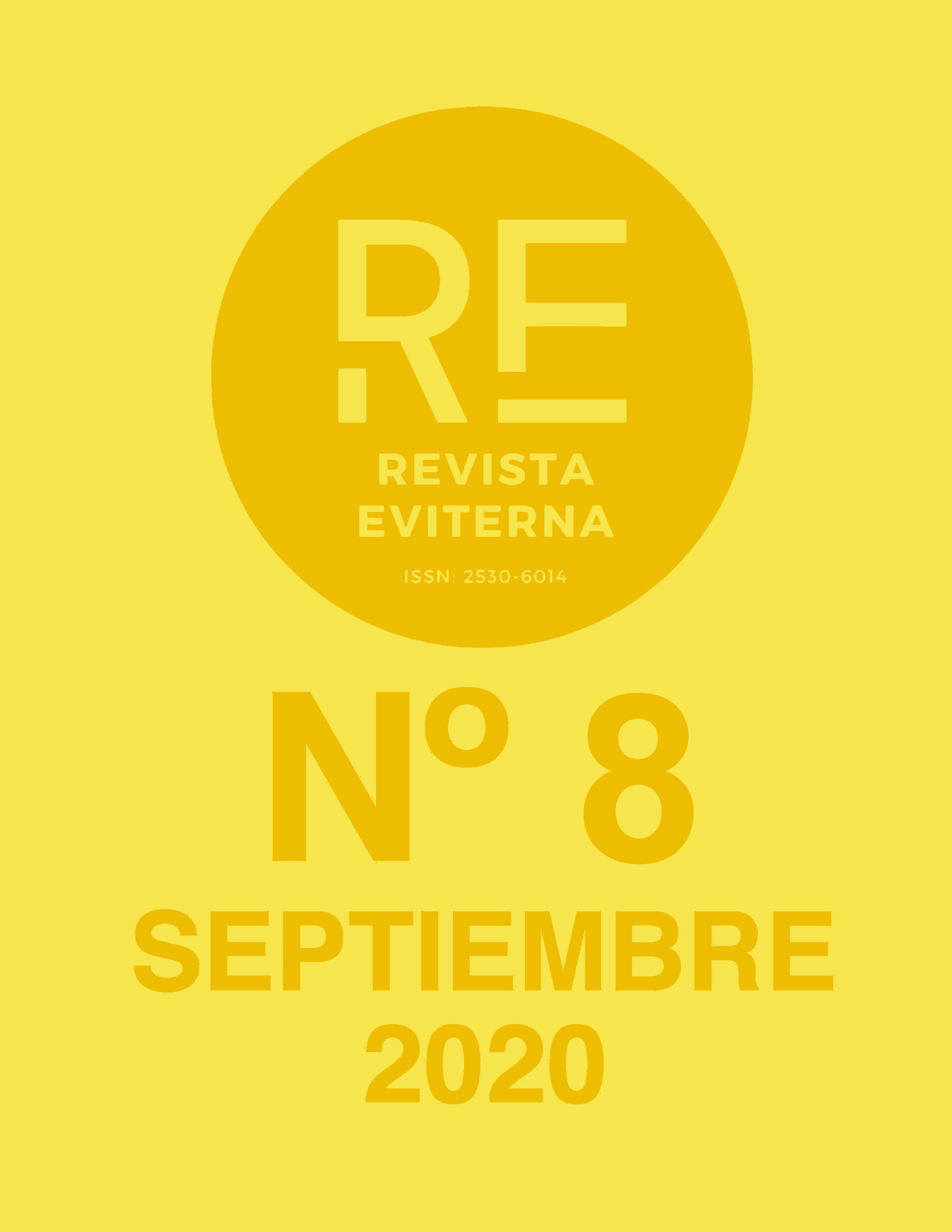Visual manifestations of the law in the visuality of Justice
DOI:
https://doi.org/10.24310/Eviternare.vi8.9767Keywords:
Justice, Law, Allegory, Iconography, Cardinal VirtuesAbstract
Law’s importance in application and execution of Justice is shown in this virtue both theoretically and visually. Law is concreted visually in Justice’s image through different attributes which highlight the importance of law in its practice. Moreover, law has been considered by thinkers as one of virtues that compose Justice. This consideration has visual repercussions both for the Law and for Justice. In this way, Justice’s attributes are the visual display of the aspects that compose it. For this reasons, Justice share attributes with allegory of Law.
Downloads
Metrics
References
Angelomus de Luxeuil (1852). Commentarius in Genesin. En Migne, J.P., Patrología Latina, CXV.
Aristóteles (1973). Obras. Aguilar: Madrid.
Aristóteles (1985). Ética a Nicómano. Gredos: Madrid.
Bartoli, B. di (1904). La Canzone delle Virtù e delle Scienze. Ed. d’Arti Grafiche: Bérgamo.
Boudard, J. B. (1759). Iconologie. Philippe Carmignani: Parma.
Bruck, J. (1618). Emblemata política. Abrahamum Hogenberg chalcographos: Argentinae & Coloniae.
Capaccio, G. C. (1592). Trattato delle imprese. Horatij Salviani: Nápoles.
Cicerón, M. T. (1991). Retórica a Herenio. Bosch: Barcelona.
Cicerón, M. T. (1997). La invención retórica. Gredos: Madrid.
Comenius, J. (1887). Orbis pictus. C.W. Bardeen: Nueva York.
Covarrubias Horozco, S. de (1610). Emblemas morales. Luís Sánchez: Madrid.
Diccionario de la Real Academia Española de la Lengua. Recuperado de: http://dle.rae.es/srv/fetch?id=MbWK64n (15/01/2019, 14:47).
Fletcher, G. (1888). Christ’s Victory and Triumph in Heaven and Earth Over and After Death. E. P. Dutton: Nueva York.
Gaucher, C.E., Gravelot, H.F. y Cochin, C.N. (1791). Iconologie par figures, Lattré Graveur: París, vol. 3.
González García, J.M. (2017). The eyes of justice: blindfolds and farsightedness, vision and blindness in the aesthetics of the law. Vittorio Klostermann: Frankfurt am Main.
Guzmán, F. de (1565). Triumphos morales. Casa de Andrés: Alcalá de Henares.
Hesíodo (1997). Los trabajos y los días. Gredos: Madrid.
Holmes, W. (1868). Religious emblems and allegories. W. Tegg: Londres.
Horapolo (1593). Hyerogliphica. Apud Aloysium Zannetum: Roma.
Hugo de San Víctor (1854). De fructibus carnis et spiritus. En Migne, J. P., Patrología Latina, CLXXVI.
Huygebaert, S. (2016). Justitia, the Cardinal Virtue that became a political ideal. En Huygebaert, S., Martyn, G. & Paumen, V. (eds.). The art of law: three centuries of justice depicted (pp. 139-153). Tielt, Uitgeverij Lannoo.
Martyn, G. (2016). Divine Judgement, Wordly Justice. En: Huygebaert, S., Martyn, G. & Paumen, V. (eds.). The art of law: three centuries of justice depicted (pp. 15-28). Tielt, Uitgeverij Lannoo.
Mendo, A. (1662). Príncipe perfecto y ministros aivstados. Horacio Boissat & George Remevs: Lyon.
Montesinos Castañeda, M. (2019). La visualidad de las Virtudes Cardinales. (Tesis de doctorado). Universitat de València, València, España.
Oraeo, H. (1620). Aereoplastes Theo-Sophicus sive Eicones Mysticae. Francofurti.
Pallares, E. (1983). Diccionario de Derecho Procesal Civil. Porrúa: Méjico.
Pascucci, I. (2000). L’iconografia delle virtù nella Sala Vecchia degli Svizzeri in Vaticano. Studi romani: Rivista trimestrale dell'Istituto di studi romani, nº 48, 1, pp. 26-35.
Peacham, H. (1612). Minerva Britanna. Shoe-lane: Londres.
Pérez Bustamante, R. & Cruz Yábar, M.T. (2007). Iustitia: la justicia en las artes. Comunidad de Madrid: Madrid.
Pietrasanta, S. (1634). De Symbolis heroicis. Balthasaris Moreti: Antuerpiae.
Ricci, V. (1626). Geroglifici morali. Domenico Roncagliolo: Nápoles.
Ripa, C. (2007). Iconología. Akal: Madrid.
Rodríguez López, M. I. (2003). Iconografía de la Justicia en las artes plásticas (desde la antigüedad hasta las postrimerías del Medioevo). Saberes, nº 1, pp. 1-26.
Sánchez Prieto, S. (2010). El espejo de la justicia: acercamiento a sus principales símbolos e imágenes. Lex Nova: La Revista, nº 59, pp. 40-41.
Villava, J. F. (1613). Empresas espirituales y morales. Fernando Díaz de Montoya: Baeza.
Watters, W. (2016). Rhetoric as a vehicle for Justice on earth. En Huygebaert, S., Martyn, G. & Paumen, V. (eds.). The art of law: three centuries of justice depicted (pp. 183-186). Tielt, Uitgeverij Lannoo.
Watters, E. (2016). Thronus iustitiae: Divine Justice on earth. En Huygebaert, S., Martyn, G. & Paumen, V. (eds.). The art of law: three centuries of justice depicted (pp. 57-60). Tielt, Uitgeverij Lannoo.
Downloads
Published
How to Cite
Issue
Section
License
All the contents published in Revista Eviterna are subject to the Creative Commons Reconocimento-NoComercia-Compartirigual 4.0 license, the full text of which can be found at <http://creativecommons.org/licenses/by-nc-sa/4.0>
They may be copied, used, disseminated, transmitted and publicly exposed, provided that:
The authorship and original source of your publication (Journal, editorial and URL of the work) are cited.
They are not used for commercial purposes.
The existence and specifications of this use license are mentioned.

Copyright is of two kinds: moral rights and patrimonial rights. Moral rights are perpetual, inalienable, inalienable, inalienable, inalienable and imprescriptible prerogatives.
In accordance with copyright legislation, Revista Eviterna recognizes and respects the moral rights of the authors, as well as the ownership of the economic right, which will be transferred to the University of Malaga for dissemination in open access.
The economic rights refer to the benefits obtained by the use or disclosure of the works. Revista Eviterna is published in open access and is exclusively authorized to carry out or authorize by any means the use, distribution, disclosure, reproduction, adaptation, translation or transformation of the work.
It is the responsibility of the authors to obtain the necessary permissions of the images that are subject to copyright.






12.png)
